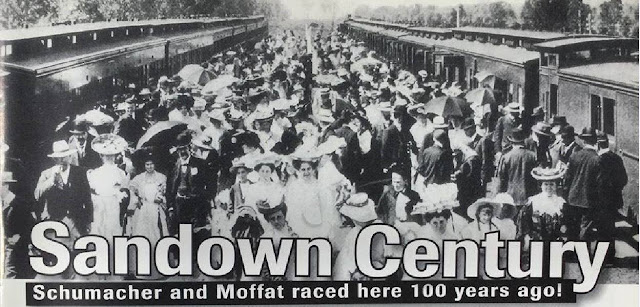The 1960s were were looking like prosperous times when this article was published in the Dandenong Journal on the 19th of January 1949.
--
BIG ENGINEERING FIRM BUYS 30 ACRE FACTORY SITE AT DANDENONG
Ideal Locate At Junction Of Two Highways PROJECT WILL EMPLOY 300-400 MEN IN TWO YEARS WORK FOR 1,000—1,200 MEN BY 1960
A BIG ENGINEERING concern is negotiating for a 30-acre factory site at the junction of the Princes Highway and the South Gippsland Highway on the outskirts of Dandenong. The land is bordered on one side by the Princes Highway and on the other by the Gippsland railway line, and extends back to the Eumemmering Creek. Proximity to the main highways, the railway and the town make the site an ideal one for the purpose. By 1960 the factory will have a pay-roll of between 1,000 and 1,200 and it should be a great asset to the town. •Strangely enough, although situated almost in Dandenong, the site is in the Berwick and Cranbourne Shires.
The proposal has been “in the air” -for quite a time, having been mentioned at a meeting of the Dandenong* Chamber of Commerce some months ago, but first concrete information was contained in the following letter from Phillip R. Claridge, Hassell and Mc-Connell, architects, of Adelaide, which came before the Berwick Council on Monday: “This letter is confirmation of our concerning the establishing of a factory in Section 25, Crown Allotment 15,.. discussions of the 10th January last Cranibourne Riding, in the Shire of Cranbourne, and C.A. 16 and 18 Berwick Riding in the Shire of Berwick. The undertaking will be of an engineering nature and will ultimately employ, in 1960, between 1,000 and 1,200 workers. However, an inital staff of approximately one-third of' the ultimate, is anticipated in two years The proposed buildings will be constructed in accordance with the local rand Uniform Building Regulations. The industry is not of a noxious nature.
Our clients are anxious to finalise purchase of the land and would appreciate written assurance .by January 20th, that your shire approves of the land being used for industrial purposes.” *“It “It should be a jolly good thing,” remarked Engineer Ron Chambers. “We will get the rates and Dandenong gets the services.” Crs. G. Rae and Greaves moved that the necessary approval be given subject to the -industry not being of a" noxious nature. ANOTHER FACTORY OPPOSITE? Cr. G. Rae said that he had heard that another concern had bought land on the opposite side of the Highway for a factory. The engineer pointed out that with the establishment of these new industries in their territory they should have a good case to put up to the Housing Commission for the erection of houses along the high land bordering the highway on the road to Hallam.
Dandenong Journal, on 19th of January 1949 , found on Trove.
http://trove.nla.gov.au/
http://trove.nla.gov.au/











